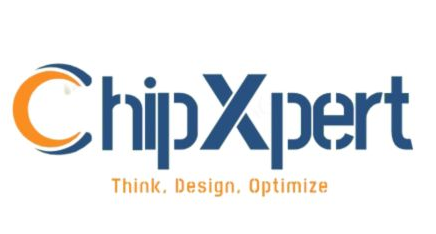Unlocking the Power of Physical Design in VLSI: A Comprehensive Course Guide
In the ever-evolving world of semiconductor technology, VLSI (Very-Large-Scale Integration) is at the heart of innovation. From smartphones to AI systems, VLSI chips power modern devices, making them smaller, faster, and more efficient. Among the various stages in VLSI design, Physical Design plays a crucial role. This stage ensures that digital circuits are optimally translated into real-world silicon chips.
If you’re aspiring to break into the semiconductor industry, mastering Physical Design in VLSI is essential. In this blog, we’ll dive into what the Physical Design course offers, why it’s vital for your career, and how it can set you on the path to success in the world of VLSI.
What is Physical Design in VLSI?
Physical Design refers to the process of transforming a logical design (a netlist) into a physical representation that can be fabricated into a real chip. It involves optimizing the design to meet requirements like performance, power, and area (PPA). This stage includes several critical steps, such as floorplanning, placement, routing, and verification.
Key Stages in Physical Design:
- Floorplanning: Defining the overall layout and resource allocation for the chip.
- Placement: Arranging logic gates and cells within the chip to optimize performance.
- Routing: Ensuring that connections between cells are efficient and meet timing constraints.
- Clock Tree Synthesis (CTS): Ensuring that the chip’s clock signal is evenly distributed to all parts.
- Physical Verification: Checking for design flaws and ensuring manufacturability.
Key Topics Covered in the Physical Design Course
When you enroll in a Physical Design in VLSI course, you’ll be exposed to various tools and techniques that industry experts use. Here are some of the key topics covered:
- Floorplanning: Learn how to optimize chip layout and determine the die area and component placement.
- Placement: Discover how to position cells in the design to minimize power consumption and maximize chip speed.
- Clock Tree Synthesis (CTS): Master the process of distributing clock signals across the chip to synchronize operations.
- Routing: Understand how to design efficient interconnections between different components and cells.
- Physical Verification: Gain hands-on experience in ensuring the design adheres to manufacturing rules and operates reliably.
Tools and Technologies Used in Physical Design
The Physical Design course offers hands-on experience with some of the most widely used Electronic Design Automation (EDA) tools in the industry. These tools, such as Cadence, Synopsys, and Mentor Graphics, allow engineers to automate the design process and streamline workflows.
Using these tools, you’ll get a practical understanding of how designs are created, simulated, and optimized before they go into production. This practical exposure is invaluable as you move forward in your VLSI career.
Why Choose a Physical Design Course?
In the semiconductor industry, Physical Design is one of the most in-demand skill sets. By mastering Physical Design, you’re opening doors to several lucrative opportunities. Here’s why this course is a must for any aspiring engineer:
- High Demand: As semiconductor technology continues to grow, companies are seeking skilled engineers who can design efficient, high-performance chips.
- Career Opportunities: A specialized knowledge of Physical Design allows you to pursue roles like Physical Design Engineer, Layout Engineer, and ASIC Designer.
- Competitive Salary: The demand for VLSI professionals, particularly those with expertise in Physical Design, ensures a competitive salary and job stability.
Benefits of Taking This Course
- Industry-Relevant Skills: Gain expertise in techniques that are directly applicable to real-world design challenges.
- Hands-On Training: Work with the same tools and software used in leading tech companies.
- Career Growth: Improve your employability and gain a strong foundation for further specialization.
- Networking: Connect with industry professionals and build relationships that could benefit your career.
How the Course Works
Our Physical Design in VLSI course is designed to provide practical knowledge and in-depth understanding. The course is available in both online and offline formats, allowing flexibility for learners worldwide. With interactive sessions, real-world case studies, and mentorship from industry experts, you’ll get a comprehensive learning experience. Plus, you’ll receive certification upon course completion, adding value to your resume.
Who Should Enroll in the Course?
This course is ideal for anyone who is passionate about VLSI design and wants to pursue a career in the semiconductor industry. Specifically, the course is well-suited for:
- Electronics and Electrical Engineering Students
- Fresh Graduates looking to specialize in VLSI or Physical Design
- Industry Professionals who want to upgrade their skills and transition to VLSI-related roles
Basic knowledge of digital logic and an understanding of the VLSI design flow are recommended but not mandatory.
Career Opportunities After Completing the Course
The Physical Design course opens up a wide range of career opportunities in the semiconductor and electronics industries. Upon completing the course, you’ll be equipped to take on roles such as:
- Physical Design Engineer
- Layout Engineer
- ASIC Designer
- Verification Engineer
With the booming demand for VLSI professionals, you’ll be in a strong position to land rewarding jobs at top semiconductor companies, tech firms, or startups.
Conclusion
The Physical Design in VLSI course is an excellent stepping stone for anyone looking to make a mark in the semiconductor industry. By mastering the core concepts of floorplanning, placement, routing, and physical verification, you can unlock a successful career in one of the most cutting-edge fields of engineering.
Don’t miss out on this opportunity to shape the future of technology. Enroll today and start your journey towards becoming a skilled VLSI professional!


